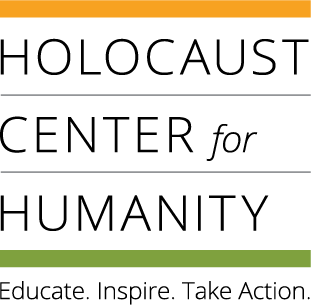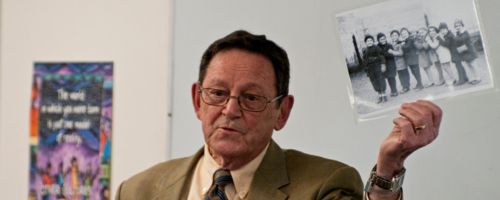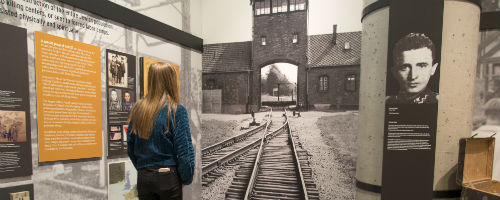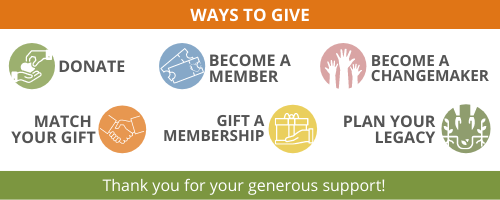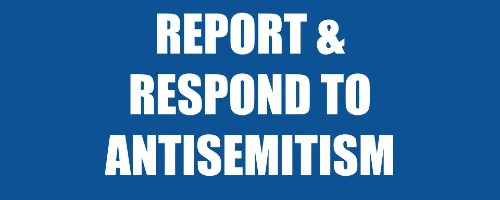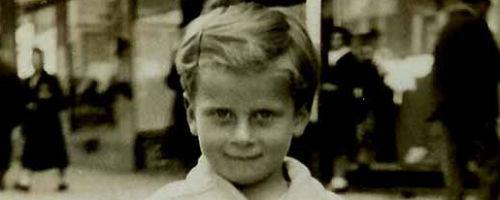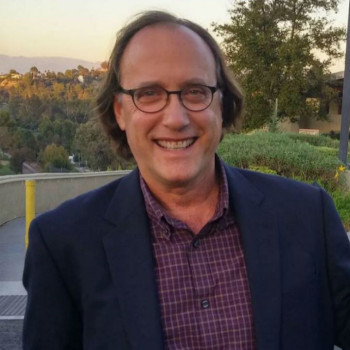
 Ron Gompertz tells the story of his father, Rolf Gompertz. Ron is proud of his family heritage, and decided to research his father’s story so that he could help reach students who were studying the Holocaust. Ron tells his father’s story through video clips of his father telling about his own life, along with photos and documents that accompany his family research.
Ron Gompertz tells the story of his father, Rolf Gompertz. Ron is proud of his family heritage, and decided to research his father’s story so that he could help reach students who were studying the Holocaust. Ron tells his father’s story through video clips of his father telling about his own life, along with photos and documents that accompany his family research.
Rolf was born in Krefeld, Germany in 1927. Krefeld served as a hub for surrounding Jewish communities. Before 1933, there were 1,500 Jewish people living there. In 1933, when Rolf was only 6, the Nazi Party gained power in Germany.
Rolf’s memories include the fateful night of Kristallnacht on November 9, 1938. Nazi soldiers banged at the door of his parents' apartment demanding to be let in. They stormed into the apartment ready to arrest Rolf’s father. Rolf’s father ran into his office and pulled out his Iron Cross medal for valor in World War I.
Luckily, this time the Nazis left, but 30,000 Jewish men were arrested in the next few days.
The Gompertz family was fortunate to find a distant relative in Los Angeles who provided them with an affidavit to sponsor the family. They arrived in Los Angeles in June of 1939, just a few months before war broke out between Germany and Poland and deportations of Jews began.
Rolf entered the United States as a refugee. He started school in sixth grade barely speaking English, but grew up to be a journalist and author. He returned to Krefeld in 1987 to tell his story to adults and students. Rolf has also told his story to students in Los Angeles.
Rolf is very proud that his son, Ron, has decided to continue his mission of educating students about the Holocaust as a member of the Holocaust Center for Humanity Speakers Bureau.
Ron himself works in the Seattle area in the tech industry. In 2017, he published the novel Life's Big Zoo.
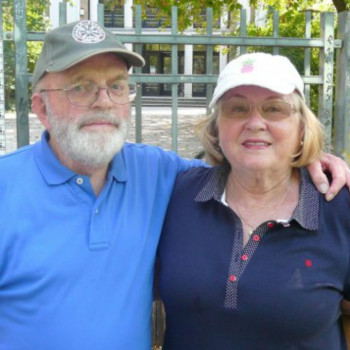
 Henry Haas was born to two Jewish families in Berlin Germany on April 8, 1938. In July, 1938, his parents Ivan Hans Haas (later John) and Gerda resolved to escape but had no way, literally, to immigrate to any country in the world. They fled for 12 months, traveling first to Slovakia, then the Czech Republic, Italy, Holland and France. Finally, in July 1939, with the assistance of a Jewish Refugee organization in Paris France, they were able to secure tickets on a ship to Shanghai, China. This was the only port in the world, which, from 1933 to 1941, admitted approximately 17,000 Jews. The Haas family ship journey took three weeks, traveling from Marseille, France to Port Said Egypt, through the Suez Canal to Djibouti on the horn of Africa, and eventually to the port of Shanghai. A city of 6 million at that time, the Haas family arrived in Shanghai without funds, in a temperature of 105 degrees Fahrenheit, and encountered an entirely foreign culture.
Henry Haas was born to two Jewish families in Berlin Germany on April 8, 1938. In July, 1938, his parents Ivan Hans Haas (later John) and Gerda resolved to escape but had no way, literally, to immigrate to any country in the world. They fled for 12 months, traveling first to Slovakia, then the Czech Republic, Italy, Holland and France. Finally, in July 1939, with the assistance of a Jewish Refugee organization in Paris France, they were able to secure tickets on a ship to Shanghai, China. This was the only port in the world, which, from 1933 to 1941, admitted approximately 17,000 Jews. The Haas family ship journey took three weeks, traveling from Marseille, France to Port Said Egypt, through the Suez Canal to Djibouti on the horn of Africa, and eventually to the port of Shanghai. A city of 6 million at that time, the Haas family arrived in Shanghai without funds, in a temperature of 105 degrees Fahrenheit, and encountered an entirely foreign culture.
The following eight years were spent under Japanese occupation, living in an area that became the “Ghetto of Hongkew”, with their home being a single small room – no bathroom, no toilet, and no kitchen.
In 1947, two years after the end of WWII, the family arrived as non-Englis h speaking refugees, in San Francisco. The Hebrew Immigrant Aid Society (HIAS), helped the Haas family to come to America. First they settled in Portland Oregon, then Centralia Washington, and, finally, in Tacoma Washington.
Kate, Henry ’s wife, born and brought up near London, England, came to Tacoma at age nineteen for a visit and stayed. Kate Haas has written the Haas family story in great detail. Together, Henry and Kate, with the use of photos, maps, and historic family documents, tell the story. Henry and his late mother Gerda, who live d to age 98, told this story for many years to school classes and other groups in the Tacoma area. Now, Henry has joined the speaker’s bureau to further share this memoir of anti-Semitism, during the Holocaust.
Henry graduated from the University of Puget Sound and obtained a law degree from the University of Washington in 1962. He continues practicing law to this day.
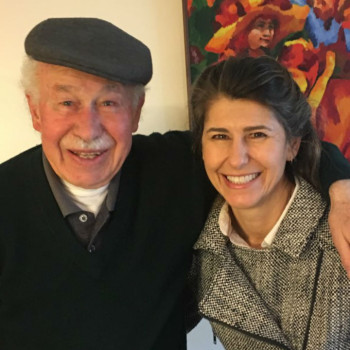
Daughter of Tom Lenda, a child survivor of Theresienstadt, Hana Kern shares her father's experiences.
 Tom Lenda was born Tomas Lustig in 1936 in Plzen, Czechoslovakia (now Czech Republic). Tom’s father, Pavel (Paul) Lustig, was born in Domazlice, Czechoslovakia in 1904. The Lustig family moved to Plzen shortly after Paul was born. Tom’s mother, Irene Spitz, was born in Austria in 1909. Her family later moved to Decin, a city north of Prague.
Tom Lenda was born Tomas Lustig in 1936 in Plzen, Czechoslovakia (now Czech Republic). Tom’s father, Pavel (Paul) Lustig, was born in Domazlice, Czechoslovakia in 1904. The Lustig family moved to Plzen shortly after Paul was born. Tom’s mother, Irene Spitz, was born in Austria in 1909. Her family later moved to Decin, a city north of Prague.
The Lustig family was warm, loving, and hard working. Tom’s father Paul was educated in commerce and also attended a textile college in England. He was fluent in several languages and was an established textile manufacturers’ representative when Tom was born. Tom’s mother worked as a certified nurse in a hospital until her marriage. The Lustig family was part of a close-knit clan that was well established within the Czech community; they considered themselves proud Czechoslovak citizens of the Jewish religion.
The Nazi invasion of Czechoslovakia became a reality for the Lustig family on March 15, 1939. Little Tommy was almost three years old. Three years later, the family was sent to Terezin (Theresienstadt), a concentration camp 40 miles north of Prague.
The Lustig family was separated after their arrival at Terezin. Tom was placed in a heim (home) with other children. Irene started work as a nurse in the camp hospital, also her living quarters. Paul was assigned to a transportleitung (transportation) group and was deported to Auschwitz in fall 1944. Toward the end of the war, when the Soviet Army approached the camp, Paul escaped from Auschwitz with a small group and joined the Czechoslovak army. After liberation, Paul came back to Terezin to retrieve his family on May 25th, 1945, and the three were reunited.
Hana was born to Rose and Tom Lenda in 1966 in Czechoslovakia. The Lendas escaped from communist Czechoslovakia to Germany in 1968 and then moved to Australia before arriving in the United States in 1975. Tom's book, Children on Death Row, was published under his birth name, Tommy Lustig.
Today, Hana is an attorney in Seattle and has two children. For years, Hana helped her father with his presentations in schools. She is proud to carry on her father’s story , and officially became a member of the Speakers Bureau in 2019.
Photo: Tom Lenda with his daughter, Hana Kern, 2019.
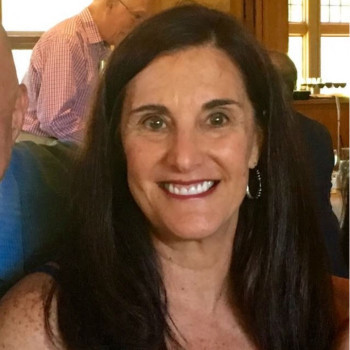
 Randee Kissinger's mother was a cousin of Vera Frank Federman's husband. Vera was born June 27, 1924. She grew up in Debrecen, Hungary as an only child, but with a large extended family. She studied both English and German and graduated from a girls’ high school.
Randee Kissinger's mother was a cousin of Vera Frank Federman's husband. Vera was born June 27, 1924. She grew up in Debrecen, Hungary as an only child, but with a large extended family. She studied both English and German and graduated from a girls’ high school.
On March 19, 1944 the Nazis occupied Hungary and soon thereafter deprived Jews of their civil rights. The Nazis, assisted by the Hungarian Arrow Cross, forced Jews out of their homes, businesses, and schools and into ghettos. Vera and her family, including her best friend and cousin, Marika Frank, were rounded up into the Debrecen ghetto along with the remaining Jewish population of their town. After several months in the ghetto and doing forced labor in a brick factory, they boarded cattle cars to Auschwitz Concentration Camp. It was June 27th 1944, Vera’s 20th birthday.
Vera was in Auschwitz for six weeks before the Nazis sent her to a munitions factory in Allendorf, a sub camp of Buchenwald, where she was a slave laborer. American forces liberated her there on March 28th, 1945. When Vera spoke later about this factory, she said that whenever they could, she and her friends did not fill the bullets with gun powder.
Vera was the only surviving member of her immediate family. After the war, she came to Seattle on a scholarship from the Hillel Foundation to attend the University of Washington. She married Marvin Federman and had two children.
Vera was a member of the Holocaust Center’s Speakers Bureau for many years. Vera passed away in 2017.
As a relative of Vera’s husband, Randee was always interested in Vera’s story . After Vera passed away, Randee decided that she wanted to tell her cousin’s story to students in the Pacific Northwest. Utilizing two testimonies by Vera at the Holocaust Center, Randee and the Center worked to develop a presentation using Vera’s video clips. Randee is currently a teacher at Maywood Middle School in Renton, WA where she teaches the Holocaust. She became a member of the Speakers Bureau in 2018.
